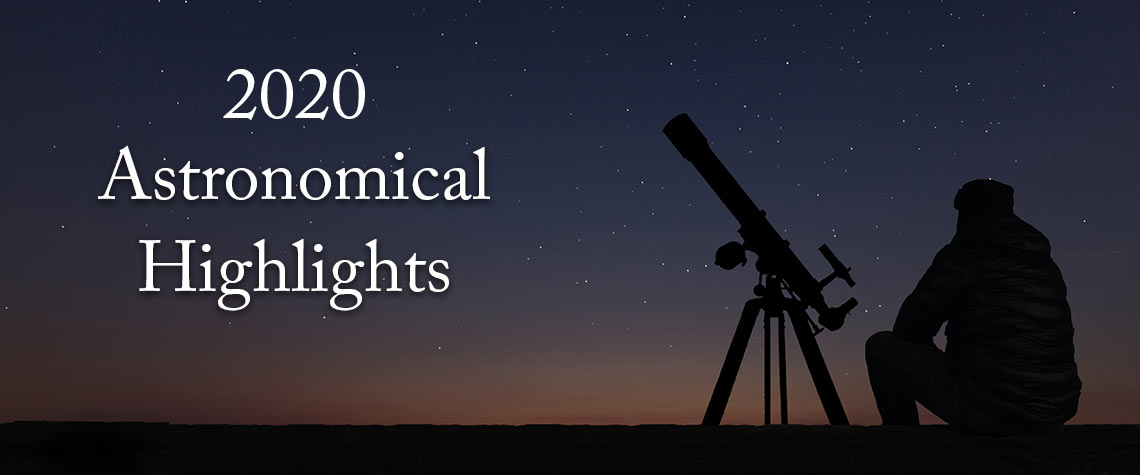Page 9


Mark Your Calendars for These 2020 Highlights
There is always something interesting to see in the night sky - stars, planets, the Moon . . . the list is endless. The new year will offer several EXTRA-spectacular celestial events worthy of a look.
Source of dates and times, acknowledgments, and permission to use data:
Sky Events Calendar by Fred Espenak and Sumit Dutta (NASA's GSFC)
Visit the Brazos Valley Astronomy Club website links below and see a comprehensive list of events for each month in 2020.
January 4, 2020
Look towards Bootes in the northeastern sky around 4a.m. to see the peak of the Quadrantids meteor shower. Around that time, approximately 100 meteors per hour are expected to zip across the sky.
January 10
Penumbral Lunar Eclipse at 13:10 CST.
February 18
The conjunction of the waning crescent moon and Mars will provide a unique opportunity to see these two celestial bodies look like they almost touch each other in the early morning hours. On this morning at 07:18 CST the Moon will pass in front of Mars and the planet will reappear on the other side of the Moon just over 2 hours later.
March 9
Supermoon tonight. It will be closest to Earth when it will be 222,081 miles away. It will officially become a full moon at 12:48 CST.
March 24
At 10:23a.m. CST, the moon is the farthest from Earth this year - 252,707 miles.
April 3
Look for Venus, shining at magnitude -4.5, close to the Pleiades cluster. This amazing view won't be visible again until April 2028. You can find Venus 0.3° to the lower left of Pleiades.
April 7
Look for a supermoon at 13:08 CST. It will officially become a full moon at 21:35 CST.
July 4
Penumbral Lunar Eclipse at 23:30 CST.
August 12
The Perseid meteor shower will put on a show the night between August 11-12.
October
Mars is back in all its glory during October, shining even brighter than it did a couple of years ago. It will arrive at opposition to the Sun on October 13 and will be visible between 19:39 and 06:54 CST. You will be able to see Mars at a magnitude of -2.6 and it will be the third brightest object in the sky. If you miss it, you will have to wait until 2035 to come this close to Earth again.
November 30
Penumbral Lunar Eclipse at 03:44 CST.
December 13-14
The Geminids meteor shower that provides a large number of meteors per hour. Look in the sky the night of December 13-14 to see 100-120 meteors moving across the dark, moonless sky. You may be able to see some meteors after 10p.m., but fireballs are possible around 2 p.m.
December 22
The last time it happened was 1623. This is the year of the "Great Conjunction" when Jupiter and Saturn will be separated by less than 2°, and if you have a high powered telescope, you should be able to see both planets in the same view. To people looking in the southwestern sky without a telescope, the planet pair will look like one giant star.